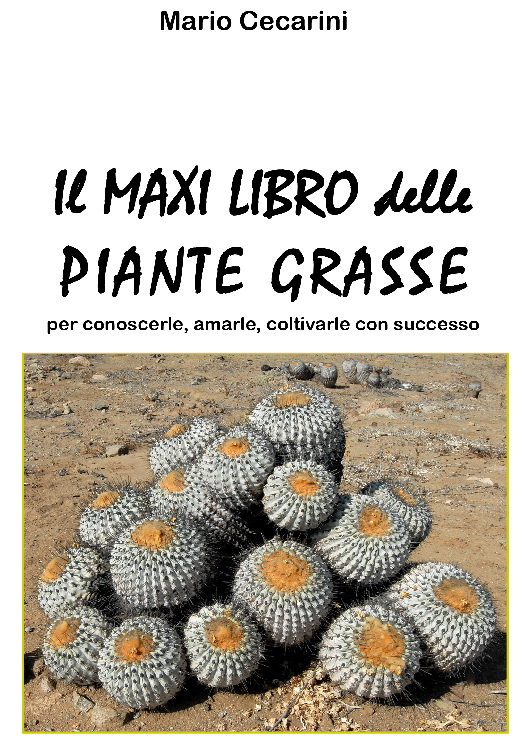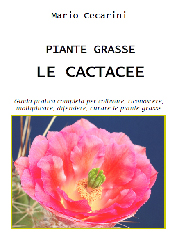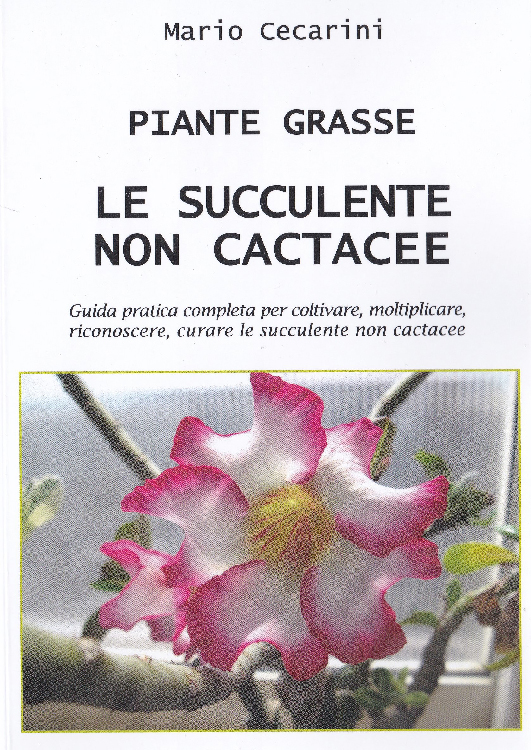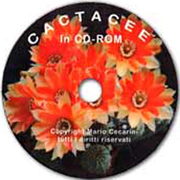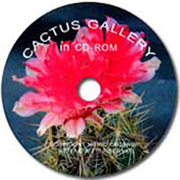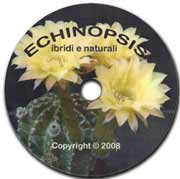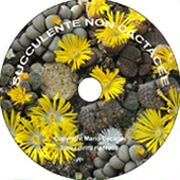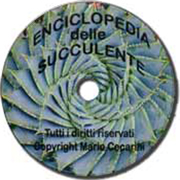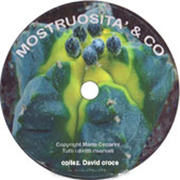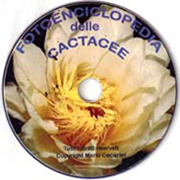
CITES (the Convention on International Trade in Endangered Species of Wild Fauna and Flora) is an international agreement between governments. Its aim is to ensure that international trade in specimens of wild animals and plants does not threaten their survival.
Widespread information nowadays about the endangered status of many prominent species, such as the tiger and elephants, might make the need for such a convention seem obvious. But at the time when the ideas for CITES were first formed, in the 1960s, international discussion of the regulation of wildlife trade for conservation purposes was something relatively new. With hindsight, the need for CITES is clear. Annually, international wildlife trade is estimated to be worth billions of dollars and to include hundreds of millions of plant and animal specimens. The trade is diverse, ranging from live animals and plants to a vast array of wildlife products derived from them, including food products, exotic leather goods, wooden musical instruments, timber, tourist curios and medicines. Levels of exploitation of some animal and plant species are high and the trade in them, together with other factors, such as habitat loss, is capable of heavily depleting their populations and even bringing some species close to extinction. Many wildlife species in trade are not endangered, but the existence of an agreement to ensure the sustainability of the trade is important in order to safeguard these resources for the future.
Because the trade in wild animals and plants crosses borders between countries, the effort to regulate it requires international cooperation to safeguard certain species from over-exploitation. CITES was conceived in the spirit of such cooperation. Today, it accords varying degrees of protection to more than 30,000 species of animals and plants, whether they are traded as live specimens, fur coats or dried herbs.
CITES was drafted as a result of a resolution adopted in 1963 at a meeting of members of IUCN (The World Conservation Union). The text of the Convention was finally agreed at a meeting of representatives of 80 countries in Washington DC., United States of America, on 3 March 1973, , and on 1 July 1975 CITES entered in force. The original of the Convention was deposited with the Depositary Government in the Chinese, English, French, Russian and Spanish languages, each version being equally authentic.
CITES is an international agreement to which States (countries) adhere voluntarily. States that have agreed to be bound by the Convention ('joined' CITES) are known as Parties. Although CITES is legally binding on the Parties – in other words they have to implement the Convention – it does not take the place of national laws. Rather it provides a framework to be respected by each Party, which has to adopt its own domestic legislation to ensure that CITES is implemented at the national level.
For many years CITES has been among the conservation agreements with the largest membership, with now 172 Parties.
The CITES Appendices
Appendices I, II and III to the Convention are lists of species afforded different levels or types of protection from over-exploitation (see How CITES works). The Appendices are also available here in PDF format for downloading.
Appendix I lists species that are the most endangered among CITES-listed animals and plants (see Article II, paragraph 1 of the Convention). They are threatened with extinction and CITES prohibits international trade in specimens of these species except when the purpose of the import is not commercial (see Article III), for instance for scientific research. In these exceptional cases, trade may take place provided it is authorized by the granting of both an import permit and an export permit (or re-export certificate). Additionally Article VII of the Convention provides for exemptions to this prohibition and these requirements.
Appendix II lists species that are not necessarily now threatened with extinction but that may become so unless trade is closely controlled. It also includes so-called "look-alike species", i.e. species of which the specimens in trade look like those of species listed for conservation reasons (see Article II, paragraph 2 of the Convention). International trade in specimens of Appendix-II species may be authorized by the granting of an export permit or re-export certificate. No import permit is necessary for these species under CITES (although a permit is needed in some countries that have taken stricter measures than CITES requires). Permits or certificates should only be granted if the relevant authorities are satisfied that certain conditions are met, above all that trade will not be detrimental to the survival of the species in the wild. (See Article IV of the Convention)
Appendix III is a list of species included at the request of a Party that already regulates trade in the species and that needs the cooperation of other countries to prevent unsustainable or illegal exploitation (see Article II, paragraph 3, of the Convention). International trade in specimens of species listed in this Appendix is allowed only on presentation of the appropriate permits or certificates. (See Article V of the Convention)
Species may be added to or removed from Appendix I and II, or moved between them, only by the Conference of the Parties, either at its regular meetings or by postal procedures (see Article XV of the Convention). But species may be added to or removed from Appendix III at any time and by any Party unilaterally (although the Conference of the Parties has recommended that changes be timed to coincide with amendments to Appendices I and II).
The names of species in the Appendices may be annotated to qualify the listing. For example, separate populations of a species may have different conservation needs and be included in different Appendices (e.g. the wolf populations included in Appendix I are only those of Bhutan, India, Nepal and Pakistan, whereas all others are included in Appendix II). Such specifications can appear next to the species name or in the Interpretation section through a cross-reference (e.g. '#1'). For this reason, the Appendices should always be consulted alongside the interpretation with which they are presented.
Parties may enter reservations with respect to any species listed in the Appendices in accordance with the provisions of Articles XV, XVI or XXIII of the Convention.
The provisions apply within the EU. (more stringent than CITES) are contained in Orders No 338/1997 and 1808/2001 published in the Official Journal European Union.
Valid from the 1st July 2008
| Appendix I | Appendix II | Appendix III |
| AGAVACEAE | ||
| Agave parviflora | ||
| Agave victoriae-reginae #1 | ||
| Nolina interrata | ||
| APOCYNACEAE | ||
| Hoodia spp. #9 | ||
| Pachypodium spp. #1 (Except the species included in Appendix I) |
||
| Pachypodium ambongense | ||
| Pachypodium baronii | ||
| Pachypodium decaryi | ||
| BROMELIACEAE piante dell'aria, bromelias | ||
| Tillandsia harrisii #1 | ||
| Tillandsia kammii #1 | ||
| Tillandsia kautskyi #1 | ||
| Tillandsia mauryana #1 | ||
| Tillandsia sprengeliana #1 | ||
| Tillandsia sucrei #1 | ||
| Tillandsia xerographica #1 | ||
| CACTACEAE Cacti | ||
| CACTACEAE spp.6 #4 (Except the species included in Appendix I and except Pereskia spp., Pereskiopsis spp. and Quiabentia spp.) |
||
| Ariocarpus spp. | ||
| Astrophytum asterias | ||
| Aztekium ritteri | ||
| Coryphantha werdermannii | ||
| Discocactus spp. | ||
| Echinocereus ferreirianus ssp. lindsayi |
||
| Echinocereus schmollii | ||
| Escobaria minima | ||
| Escobaria sneedii | ||
| Mammillaria pectinifera | ||
| Mammillaria solisioides | ||
| Melocactus conoideus | ||
| Melocactus deinacanthus | ||
| Melocactus glaucescens | ||
| Melocactus paucispinus | ||
| Obregonia denegrii | ||
| Pachycereus militaris | ||
| Pediocactus bradyi | ||
| Pediocactus knowltonii | ||
| Pediocactus paradinei | ||
| Pediocactus peeblesianus | ||
| Pediocactus sileri | ||
| Pelecyphora spp. | ||
| Sclerocactus brevihamatus ssp. tobuschii |
||
| Sclerocactus erectocentrus | ||
| Sclerocactus glaucus | ||
| Sclerocactus mariposensis | ||
| Sclerocactus mesae-verdae | ||
| Sclerocactus nyensis | ||
| Sclerocactus papyracanthus | ||
| Sclerocactus pubispinus | ||
| Sclerocactus wrightiae | ||
| Strombocactus spp. | ||
| Turbinicarpus spp. | ||
| Uebelmannia spp. | ||
| CRASSULACEAE Dudleyas | ||
| Dudleya stolonifera | ||
| Dudleya traskiae | ||
| DIDIEREACEAE Alluaudias, didiereas | ||
| DIDIEREACEAE spp. #1 | ||
| DIOSCOREACEAE | ||
| Dioscorea deltoidea #1 | ||
| DROSERACEAE | ||
| Dionaea muscipula #1 | ||
| EUPHORBIACEAE | ||
| Euphorbia spp. #1 (Succulent species only except the species included in Appendix I. Artificially propagated specimens of cultivars of Euphorbia trigona, artificially propagated specimens of crested, fan-shaped or colour mutants of Euphorbia lactea, when grafted on artificially propagated root stock of Euphorbia neriifolia, and artificially propagated specimens of cultivars of Euphorbia ‘Milii’ when they are traded in shipments of 100 or more plants and readily recognizable as artificially propagated specimens, are not subject to the provisions of the Convention) |
||
| Euphorbia ambovombensis | ||
| Euphorbia capsaintemariensis | ||
| Euphorbia cremersii (Includes the forma viridifolia and the var.rakotozafyi) |
||
| Euphorbia cylindrifolia (Includes the ssp. tuberifera) | ||
| Euphorbia decaryi (Includes the vars. ampanihyensis, robinsonii and spirosticha) |
||
| Euphorbia francoisii | ||
| Euphorbia moratii (Includes the vars. antsingiensis,bemarahensis and multiflora) |
||
| Euphorbia parvicyathophora | ||
| Euphorbia quartziticola | ||
| Euphorbia tulearensis | ||
| FOUQUIERIACEAE | ||
| Fouquieria columnaris #1 | ||
| Fouquieria fasciculata | ||
| Fouquieria purpusii | ||
| LILIACEAE Aloes | ||
| Aloe spp. #1 (Except the species included in Appendix I. Also excludes Aloe vera, also referenced as Aloe barbadensis which is not included in the Appendices) |
||
| Aloe albida | ||
| Aloe albiflora | ||
| Aloe alfredii | ||
| Aloe bakeri | ||
| Aloe bellatula | ||
| Aloe calcairophila | ||
| Aloe compressa (Includes the vars. paucituberculata,rugosquamosa and schistophila) | ||
| Aloe delphinensis | ||
| Aloe descoingsii | ||
| Aloe fragilis | ||
| Aloe haworthioides (Includes the var. aurantiaca) | ||
| Aloe helenae | ||
| Aloe laeta (Includes the var. maniaensis) | ||
| Aloe parallelifolia | ||
| Aloe parvula | ||
| Aloe pillansii | ||
| Aloe polyphylla | ||
| Aloe rauhii | ||
| Aloe suzannae | ||
| Aloe versicolor | ||
| Aloe vossii | ||
| PORTULACACEAE Lewisias, portulacas | ||
| Anacampseros spp. #1 | ||
| Avonia spp. #1 | ||
| Lewisia serrata #1 | ||
| WELWITSCHIACEAE Welwitschia | ||
| Welwitschia mirabilis #1 |
#1 All parts and derivatives, except:
a) seeds, spores and pollen (including pollinia);
b) seedling or tissue cultures obtained in vitro, in solid or liquid media, transported in sterile containers;
c) cut flowers of artificially propagated plants; and
d) fruits and parts and derivatives thereof of artificially propagated plants of the genus Vanilla.
6 Artificially propagated specimens of the following hybrids and/or cultivars are not subject to the provisions of the Convention:
– Hatiora x graeseri
– Schlumbergera x buckleyi
– Schlumbergera russelliana x Schlumbergera truncata
– Schlumbergera orssichiana x Schlumbergera truncata
– Schlumbergera opuntioides x Schlumbergera truncata
– Schlumbergera truncata (cultivars)
– Cactaceae spp. colour mutants lacking chlorophyll, grafted on the following grafting stocks: Harrisia 'Jusbertii',
Hylocereus trigonus or Hylocereus undatus
– Opuntia microdasys (cultivars).
#4 All parts and derivatives, except:
a) seeds, except those from Mexican cacti originating in Mexico, and pollen;
b) seedling or tissue cultures obtained in vitro, in solid or liquid media, transported in sterile containers;
c) cut flowers of artificially propagated plants;
d) fruits and parts and derivatives thereof of naturalized or artificially propagated plants; and
e) separate stem joints (pads) and parts and derivatives thereof of naturalized or artificially propagated plants of the genus
Opuntia subgenus Opuntia.
_______________
I. S. I. International Succulent Institut. Propose every year a list of plants and grafting at a reduced price, including plants in extinction.
I. O. S. International Organization for Succulent plant study. Established in 1950, includes over 250 members from 30 countries, aims to bring order into the intricate subject of the nomenclature of cactuses. On the occasion of the 17th Congress held in Frankfurt 10-16 June 1984 he was presented the new code of conduct here reproduced.
_______________
Code of conduct
To the Collector in the Field
Before collecting anything:
* DO acquaint yourself with CITES and national and state controls, and find out which species are protected.
* DO obtain all necessary permits, both for collecting and for export and import to other countries.
* DO notify interested local organizations of your intentions.
Then:
* DO strictly observe restrictions on what may be collected (which species, how many specimens, what kind of material). -Where possible, collect seed, offsets or cuttings, not the whole plant.
* DO leave mature plants for seed production. They are needed to perpetuate the wild population, and are unlikely to transplant successfully.
* DO collect discreetly; Don't lead local people to believe the plants are valuable, or encourage or pay them (or their children) to collect for you.
* DO make careful field-notes, including precise locality, altitude, type of vegetation and soil, date of collection and your own field number. Try to assess the number of individuals and extent of the population, the amount of seed-setting and the frequency of seedlings.
* DO note possible threats to the habitat, e.g. through grazing, drainage or cultivation, urban spread or road-widening.
* DO take photographs and/or preserve representative herbarium material. Submit this material, with a copy of your notes, to an appropriate institution or organization.
* DON'T underrate the value of your field observations: carefully recorded they will be a useful contribution to science and to conservation.
* IF... you plan to collect in commercial quantities, don't.
* IF... you plan to sell any of the plants you collect to defray the cost of your trip, don't
* IF... you plan to collect for research or study obtain the agreement (and preferably the collaboration) of competent scientific authorities, such as a government agency or university department, in the host country.
* IF... you think "two or three plants won't be missed", remember someone else may be thinking the same tomorrow, and the next day, and the next...
To the Importer, Private or Commercial
* Don't import wild plants, even if legally permitted, except as a nucleus for propagation and seed-production. And then:
* Do check the credentials of suppliers offering wild plants and satisfy yourself they are "legal".
* Do observe international and national export/import regulations.
To the Nurseryman
* Do sell nursery-raised or propagated material only; don't advertise or sell un-propagated wild plants under any circumstances, even when legally permitted to do so.
* Do try to propagate all rare or documented material and distribute it to recognized IOS Reference Collections.
* Do keep more than one clone of rare species, even self-fertile ones, for seed production.
* Do keep careful records of the origin of all stock, especially any with collectors' numbers or locality data, and pass on the information to interested purchasers.
To the Grower/Collector at Home
* Do make successful cultivation your prime objective, not the size of your collection or rarity of the plants.
* Don't buy any plant unless you are sure it was nursery-grown; remember that your choice will influence the seller's market.
* Don't buy wild-collected plants even if with the aim of saving the "individual". We want to save the species, not the specimen. Only when importers see their wild-collected plants rotting because nobody buys them they will stop the import of wild-collected plants.
* Do enjoy the satisfaction of raising from seed. Some of the rare or "difficult" species will test your skill and patience, but reward your success accordingly!
* Do record when and from whom you got your plant/seeds, and ask your source for any data: collector's numbers, locality, and so on: all just as vital, to the serious enthusiast, as the name on the label.
* Do try to propagate rare and documented material and distribute it to other enthusiasts. It's the old proverb: To keep- a plant, give it away!
* Do notify the IOS secretary if you suspect a supplier is infringing legal controls.
To the Society and Club
* DO endorse the precepts of this Code of Conduct, as a guide for responsible and conscientious behaviour.
* DON'T permit wild plants to be advertised for sale in your publications, either openly or by hints.
* DO publicize national and international regulations on the export, import and sale of wild plants.
* DO sponsor or support national and international measures to protect the habitats of rare and threatened species.
* DO inform the competent authorities of any suspect sale of collected plants. If you know of people travelling to countries where succulents grow wild, with the intention to collecting, inform the competent authorities; the best way to stop habitat exploitation by collectors is to catch them at the port of entry with the plants in hand.
To the Show Committee and Judges
* DO include in the schedule some classes for plants raised from seed by the exhibitor.
* DON'T permit species protected by CITES Appendix I to be shown in competitive classes, except as seedlings or other propagations raised artificially.
* DO make a policy of giving preference to well-grown seedlings over field-collected plants. Check that obvious or suspected "imports" are properly rooted and established.



 C.i.t.e.s.
C.i.t.e.s.



